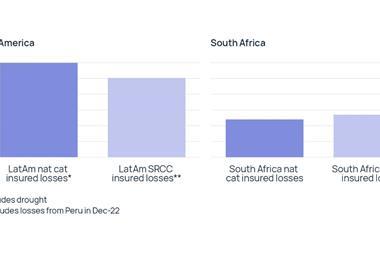European companies are looking to gain strategic advantage from their procurement programmes. Many are failing to manage the risks, claims Aileen Lennon
Independent research among European procurement chiefs demonstrates that many leading companies are inadequately prepared to mitigate - or even address - the strategic risk issues arising from the current corporate focus on realising savings from procurement programmes.
The research, 'Managing Spending in Major Corporations', was commissioned by D&B and conducted by analysts Dynamic Markets, amongst companies with revenues of $1bn plus. It found that 36% are targeting savings of six per cent or more of total expenditure. But it also raises fundamental questions about the extent to which risk analysis should be an integral component of supplier rationalisation initiatives and purchasing improvement projects.
Leading companies are increasingly looking to the procurement function to deliver strategic advantage to their organisations. In the current business climate, most are experiencing a lack of real sales growth, and hence the spotlight is moving to the supply side to effect bottom line improvements. This picture is accentuated in certain industries, most notably electronics and IT, which are having to cope with significant pricing pressures.
Nor are these companies immune to macro-economic trends, particularly globalisation and outsourcing, which are increasing the pressure on procurement executives to find lower-cost sources of supply, often geographically closer to new markets. These demands necessitate a shift in the risk pendulum away from the traditionally cautious approach of the purchasing professional, to a more innovative and business-oriented attitude.
Hence the widespread phenomenon of global supply initiatives occurring at the same time as companies are accelerating their efforts to reduce the number of suppliers used. But these moves may compromise considered risk evaluation. For example, there is evidence that early adopters of global supply initiatives are achieving cost savings of between 10-35%, increasing the pressure for urgent take up. Yet an Aberdeen Group study(1) found that most companies need to improve their global sourcing capability and associated internal competencies.
Further pressure, perhaps, is evidenced by our finding that, for most large companies, expensive e-procurement systems have yet to deliver the anticipated returns on investment. Within this environment of concentration on driving down costs and maximising performance, we believe the research shows that insufficient attention is being paid to supplier risk mitigation.
Supplier risk
What are the risks attached to supplier management operations? They are legion, and they range from country risk - geopolitical analysis of potential volatility in trading conditions - to operational - supplier performance analysis.
D&B's research focused mainly on two areas - dependency and financial stress. Clearly there are strategic implications for a brewery if its key supplier goes bust, or if part of an airline fleet is grounded because spares delivery is late. Establishing the degree of criticality is a matter for operational and procurement collaboration. Our research questions whether businesses are armed with the appropriate tools to establish risk exposures, at a time when strenuous efforts are being made to consolidate multiple sourcing at business unit level into fewer, centrally-negotiated, supplier contracts.
Quite simply, even the most respected companies have, at best, only a patchy view of what they are spending with whom. This places them at a significant disadvantage when it comes to the following:
Again, it is not possible to address these issues without access to the appropriate data. In one recent D&B assignment we found that a company was spending over E400m with highly dependent suppliers and did not know it. Upon realising this, the company immediately instituted a review of those suppliers that they deemed critical.
Research findings
The D&B/Dynamic Markets research highlights a number of information deficiencies that are placing procurement enhancement programmes at risk and are affecting companies' ability to achieve the repeatable and renewable savings at the heart of their corporate strategies. The research was conducted in the UK, France and Germany, but there was no significant variation in the overall picture.
In particular we found evidence of:
For all these reasons, the process of data aggregation and analysis can be extremely problematic. This means that if it is done at all it is often performed infrequently and in a haphazard manner.
Among the consequences are:
Risk mitigation
For companies to manage supply chain risk effectively, we believe they should adopt a best practice process approach. The model set out here is not prescriptive, but we do believe that a strong information strategy is a key step in mitigating risk.
As an information provider we must clearly declare an interest, but it would be remiss of me not to point out also that within this process third party agencies can be a source of fresh data. This can link easily to internal systems and enrich corporate information, making analysis at corporate and business unit level more current and relevant.
Above all, however, we believe that, since strategic procurement initiatives will potentially impact both top and bottom lines, the risk management function should play an integral role within the procurement process. Our research suggest that for many companies this is yet to be the case.
1) Aberdeen Group: 'The Global Sourcing Benchmark Report' June 2003, sponsored by D&B
Aileen Lennon is director, supply management solutions, for D&B Europe, Tel: 01494 422 000



















